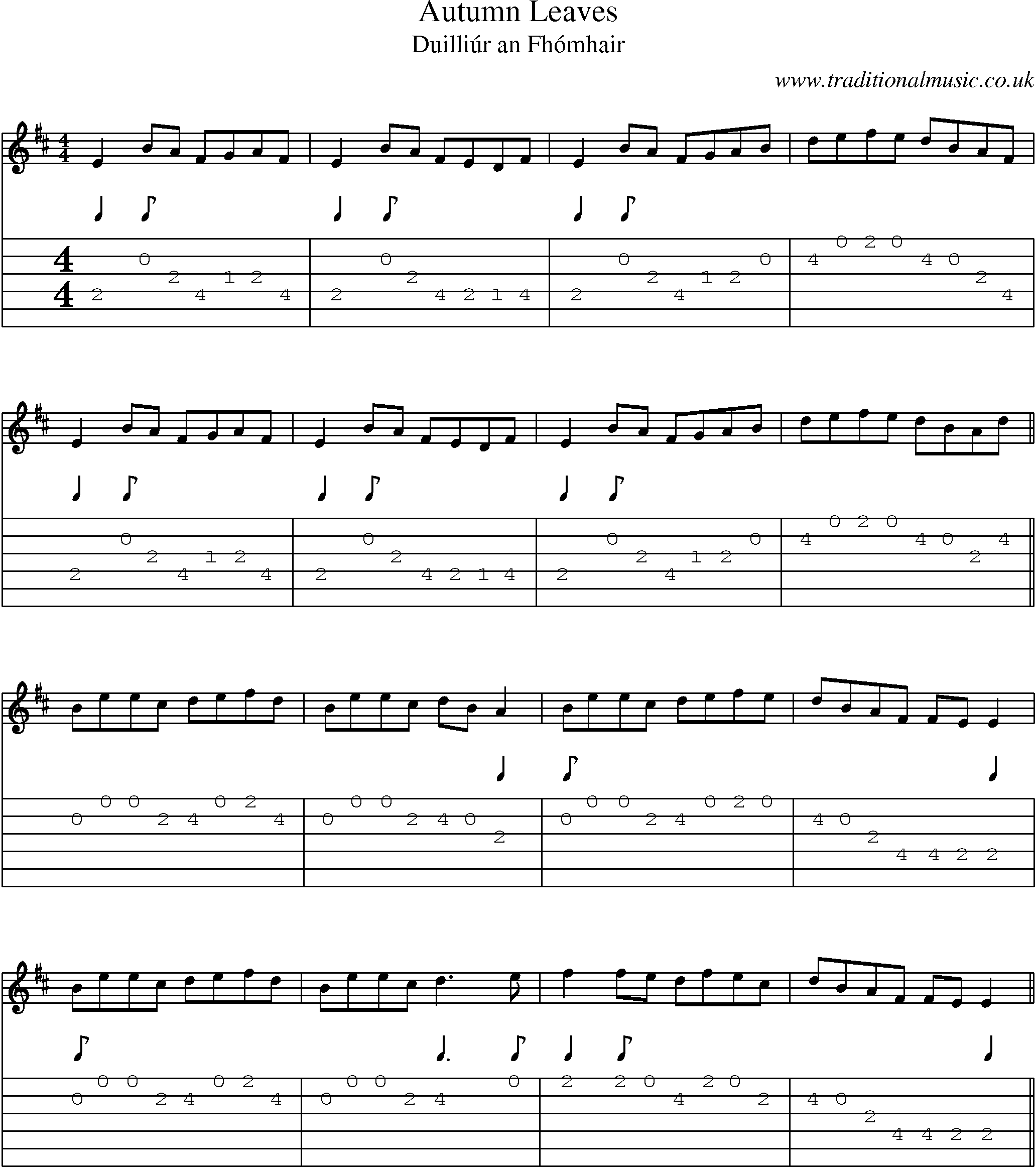Autumn Leaves Solo Guitar Pdf Tabs

About Autumn Leaves In this lesson I have chosen to work on Autumn Leaves in the key of G minor. You will find a few versions in the key of E minor since it is printed in that key in the old Realbook, but the most common key is G minor. The two main cadences in the song are II V I cadences, one to the major tonic (Bb) and one to the minor tonic (Gm). In this way you cover two of the most important harmonic movements in this key. Learning the song Besides knowing the arpeggios and the chords by heart you need to know the melody of the song you want to improvise on. In the end the melody is more important because the harmony may vary from version to version but the melody will stay the same.
In this lesson (and for copyright reasons) I can’t go over the melody, but if you want some hints on how to do this you could check out this Q&A video where I talk about that: The form of Autumn leaves is a bit uncommon for jazz since it is AAB where the B is 16 bars and the 8 bars. A good place to start is to just play the chords of the song. In example 1 I have written out chord voicings for the song. In the example I am using the material that I went over in the lesson. Since a lot of the examples I am using are over the whole form I am playing them a bit fast in the video. You can always go back and check or even play them at a slower speed if you have a place that is hard to follow.
I ended up doing it like this because the video otherwise would be much too long. The Arppegios I have written out the arpeggios in the 6th position of the neck. 
If you think in Bb major this is a very common Bb major scale position so you probably know it already. Example 2 has the arppegios of the different chords written out. If you count the chords you’ll see that we have 10 different chords. Since the goal of this lesson is to improvise fluently with well connected melodies using the arpeggios, I have written out all the arpeggios around the 6th position. Shifting up and down the neck is going to make it much more difficult to play logical melodies and almost impossible to do some of the exercises.
1 - Autumn Leaves harmony and chords in 5 fret cell; 2 - chords arpeggios in 5 fret cell; 3 - Autumn Leaves Arpeggio Etude with ascending and descending voice leading; 4 - Autumn Leaves Arpeggio Etude with rhythm variations; 5 - Autumn Leaves Solo that based on Arpeggio Etude with chords tensions and extensions, modes and passing tones.
Practising the arpeggios First you should probably try to become familiar with the arpeggios in example 2 and then as fast as possible try to start using them on the song. Students often forget how important it is to practice using what you’ve learnt.